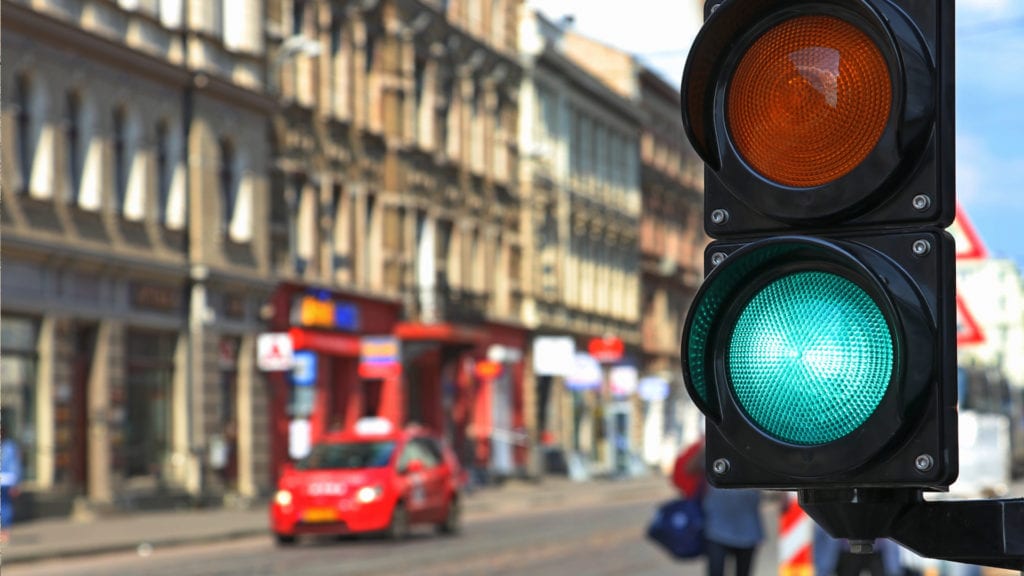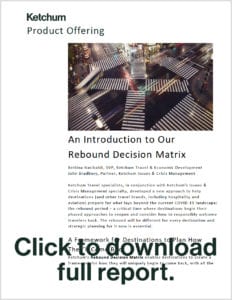I’m based in New York, and like elsewhere, we’ve had a lot of time to think about the critical and mundane things. As travel restrictions begin to loosen around the world in phases, there’s no denying that travel plans—to visit family or friends who live in other cities/countries, to reconnect with a city you love, or to discover a new city—are on everyone’s mind.

We’ve written previously about the implications of this pent-up wanderlust on consumer behavior once travel resumes and about the new normal that all brands within the traveler experience ecosystem will need to adapt to. As consumers are looking to get away—and brands are eager to help them—how can brands know when it’s safe and responsible to begin traveling again? Keeping prospective travelers engaged is key to staying relevant and top of mind when people start moving again in earnest. But, “welcome back” messages that come too soon or are too broad will almost certainly make a brand or destination seem irresponsible, especially juxtaposed with decisions already being made by leading brands to push activities to 2021.
In March, Ketchum defined the four stages of the Disruption Lifecycle for COVID-19—Impact, Regroup, Rebound, New Normal—to help our clients contextualize where they are and where they’ll be going next in the lifecycle of this crisis. Even though this crisis has made me and the rest of the world immobile, its impact is moving a mile a minute, making the Rebound phase a moving target.
But, there are signals travel brands and destinations can look for as an indication that it’s time to start welcoming daydreamers back. In addition to the table-stake benchmarks of eased travel restrictions, increased testing and a decline in cases, here are a few recommendations:
- Schools and businesses reopen. Schools resume and/or a significant portion of non-essential businesses are able to reopen in some capacity (e.g., bars, gyms, restaurants, casinos)
- Government services return to normal operations. This could include the resumption of full consular services or the reopening of government offices, like DMVs
- Travel services resume. For example, insurance companies start selling travel policies again
When it does seem safe to travel, the next question is how brands and destinations can begin to rebuild traveler confidence when many travelers will still be hesitant. While COVID-19 has been unprecedented, consider the following, based on professional experience of past crises, to help to alleviate concerns:
- Tap into the new travel influencers. Use messages from health authorities, who are regarded as trustworthy sources by most, to deliver messages that it’s safe to travel again, rather than politicians, and in addition to traditional travel/lifestyle influencers.
- Give travelers clarity and confidence. Be clear about the status of your brand or destination—what’s open, what’s not, a timeline for when things might resume and cancellation policies—and what you’re doing to keep travelers and your own staff safe and healthy, such as increased, standardized cleaning measures.

- Show, don’t tell. Don’t just talk about how you’re ready to welcome people back, show them. After natural disasters, we’ve used live webcams to show pristine beaches and community-driven campaigns to champion balanced images in media coverage, and the same level of visual transparency should be applied here. For instance, use social media to showcase businesses that are opening back up or to show how a new cleaning measure works.
These are just some of many other considerations that travel brands and destinations need to consider as part of their unique Rebound plan, especially at a time when consumers will be looking for reason and reassurances in their decisions—which won’t come as easy as they used to. Ketchum has developed tools and processes that we are using to help brands across a range of industries move from Regroup to Rebound and you can find a sample of the Rebound Decision Matrix here.
To learn more about Rebound preparedness and planning, get in touch. We’re here and ready to help.



